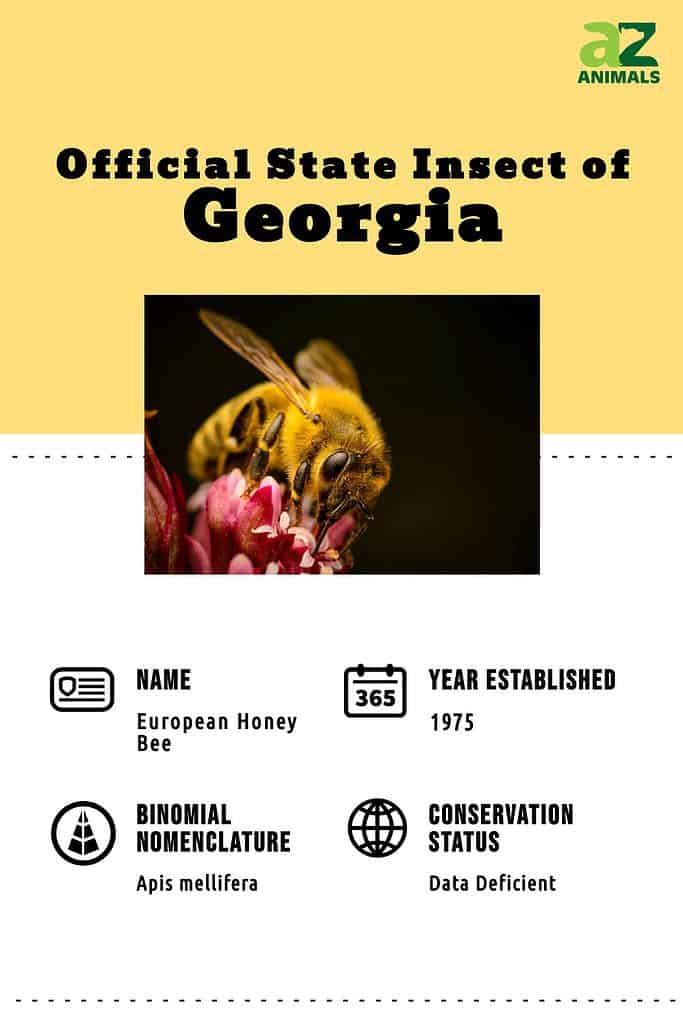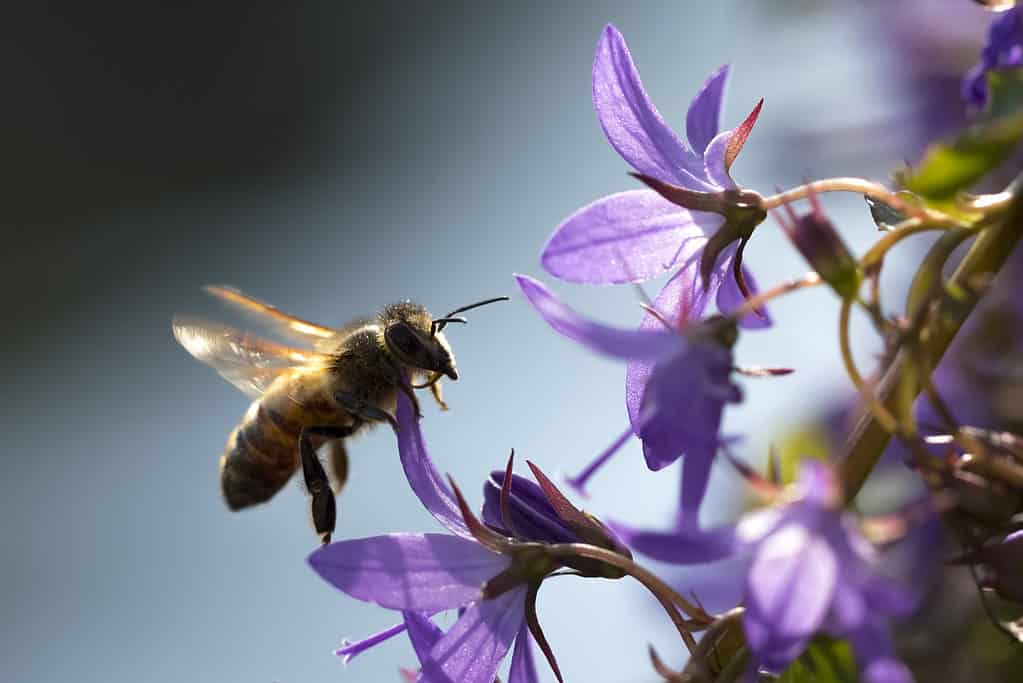The beautiful state of Georgia is famous for its historic towns with lush squares and oak-lined alleys, vast farms, high mountains, and abundant Southern charm. To say this southern U.S. state is unique would be a vast understatement. That’s not to mention the lovely beaches and shoreline, peaceful rural towns, raging rivers, magnificent national parks, clear, glittering lakes, and even a trendy city renowned for its nightlife. But do you know what Georgia’s state insect is?
While there’s a lot to love about this gorgeous state, the wildlife makes it even better. Today we’ll dive into everything there is to know about the Peach state’s favorite insect!
The official Georgia state insect is the European honey bee.

Choosing a State Insect
To recognize the honeybee’s economic contribution to the state of Georgia through the production of honey and its assistance in the pollination of more than 50 Georgian crops, the honeybee was named the official state insect of Georgia in 1975.
In terms of what it has given to man, the honeybee is vastly superior to all other insects. It is important to properly acknowledge the honeybee’s value to the state’s citizens’ welfare and agricultural interests.
The honeybee is an important resource for this State’s agricultural interests for many reasons. You can thank these buzzing bees for a lot of the tasty food you enjoy. Locals would eventually have to subsist on grains and nuts if honeybees’ cross-pollination operations for more than fifty different crops weren’t in place.
Identifying Western Honey Bees

©SanderMeertinsPhotography/Shutterstock.com
Depending on their caste, European honey bee adults might look like the colony’s queen, drone adults, or worker bee adults. The worker bees have a body length of about 1/2 inch, are colored yellow and black, and have many hairs covering them. Its head, thorax, belly, big, black eyes, two pairs of wings, and three legs make up most of its body.
The adult seems to be “thread-waisted” when observed from above due to the restricted connection between the thorax and abdomen. The “pollen sac,” situated on both hind legs, is another component of honey bee bodies. Pollen gathered from vegetation the adult worker bee encounters is kept in it.
The male caste in the colony is the drones. They have a larger head, eyes, and thorax than worker bees, and their stomach is thick and broad at the end, unlike worker bees’ pointy midsection. A stinger is not present on drones.
The stinger on worker bees can be used to protect the colony. Bees that do not reproduce are workers. Queens have a more curved and extended abdomen but otherwise resemble workers in size. Also equipped with a stinger, the queen seldom employs it.
Honey Bee Habitat
Tropical regions and dense forests are considered the honey bee’s initial homes. Although honey bees may survive in natural and cultivated settings, they prefer to reside in gardens, wooded areas, vineyards, pastures, and similar areas with many flowering plants.
These little buzzing insects create hives within tree openings and under the borders of objects in their natural habitat to protect themselves from predators. Many think honey bees first appeared in Africa and then migrated to the Americas, eastern India, northern Europe, and China.
Surviving Winter

©SanderMeertinsPhotography/Shutterstock.com
Although honey bees are now widespread and can be encountered in various settings because they were tamed to make honey for us to enjoy! Honey bees that live in temperate climes, like European honey bees, carry more honey than other subspecies because they need to keep the nest at a specific temperature to survive the winter.
Until workers have built a sizable nest with dense, insulated interiors, bees that live in these temperatures successfully adjust to their surroundings. Some bees swarm at the beginning of spring to gather enough honey for the upcoming winter.
Honey bees in tropical settings, such as African honey bees, are not required to create larger, well-insulated nests, generate a large number of workers or save a great deal of honey since they do not encounter long periods of cold weather. Swarming is more heavily influenced by the number of food sources than by seasonal considerations for honey bees in tropical habitats.
However, honey bees retain their hives at a specific temperature of 90 to 95 degrees Fahrenheit, whether in tropical or temperate settings.
Honey bees use the heat produced by their metabolism and honey consumption to keep the entire colony warm during the winter. On the other hand, during hotter months, honey bees utilize the fluid from stored nectar for evaporative cooling.
Up Next
- Discover the Largest Great White Ever Found Off Georgia’s Coast
- 10 Amazing Mountains In Georgia
- Discover the Tallest Waterfall in Georgia
- Discover the Coldest Place in Georgia
The photo featured at the top of this post is © SanderMeertinsPhotography/Shutterstock.com
Thank you for reading! Have some feedback for us? Contact the AZ Animals editorial team.






